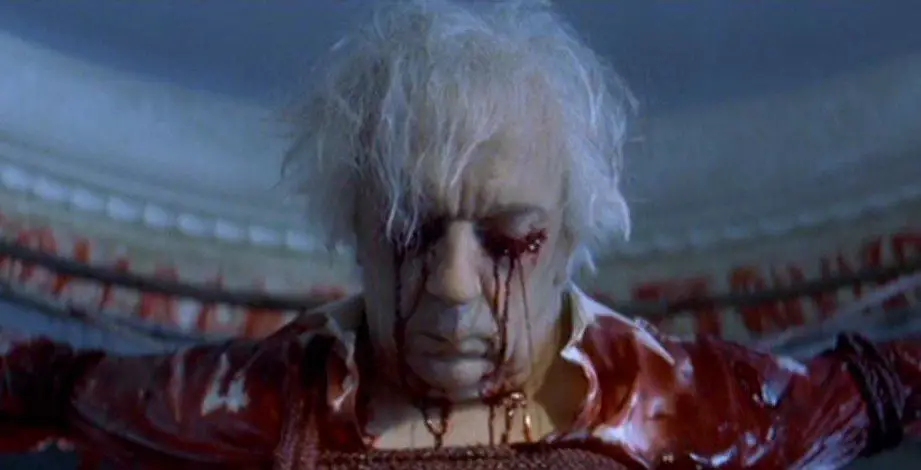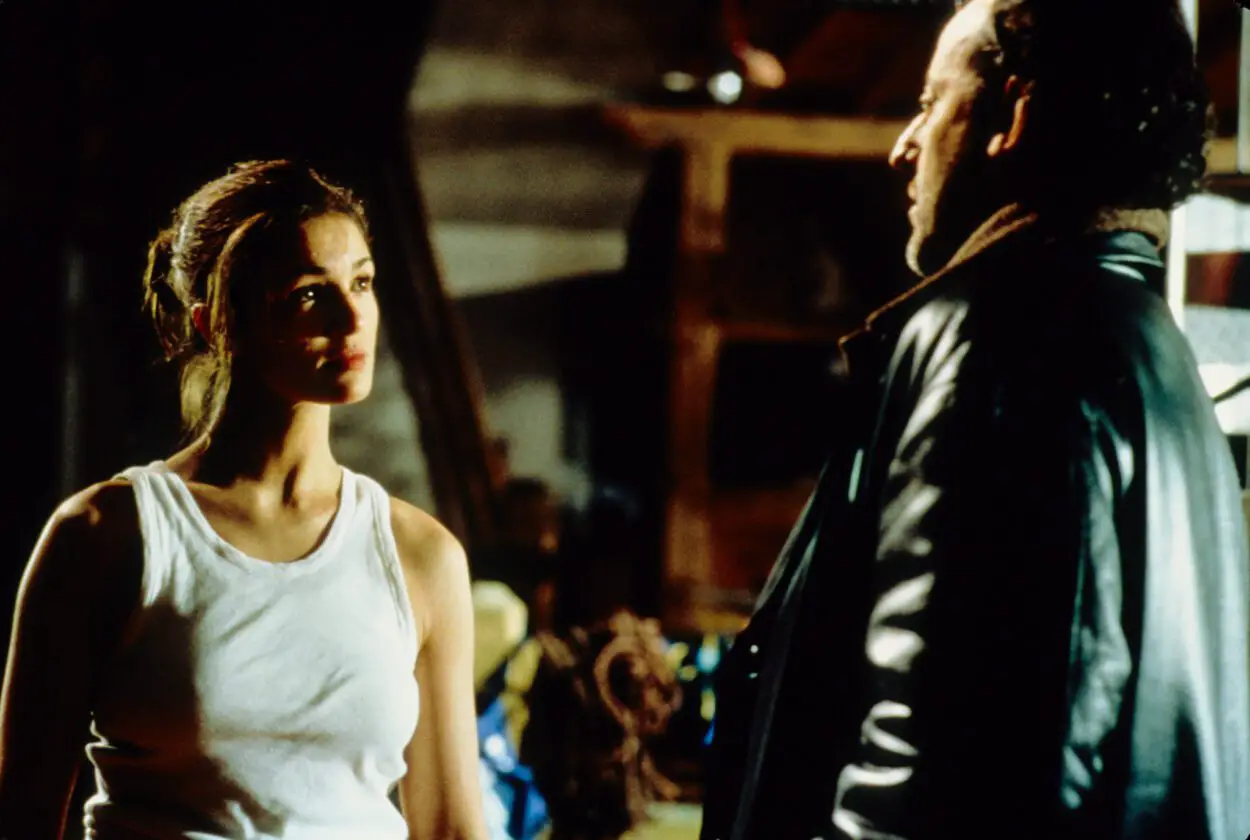Welcome to this column dedicated to my appreciation of physical media supplements called: Feature Presentations. The goal of this column is not to say whether a film is good or bad and worth picking up or not—I would like to highlight the discs that go the extra mile and provide film fans with enough tasty tidbits to satisfy even the hungriest of cinephiles. With all that out of the way, today’s article will focus on The Crimson Rivers from the After Dark Neo-Noir Cinema Collection Two box set from Imprint Films. My review of The Crimson Rivers is the first part of my multi-part review of this box set.

As a disclaimer of transparency for this episode of Feature Presentations, my review of The Crimson Rivers comes from a review copy that Imprint Films provided for review. All thoughts and opinions are my own.
I’m going to confess something: when Imprint Films announced the After Dark Collection Two, I didn’t have as much enthusiasm compared to the first box set. I feel the choice of titles this time around didn’t rile me up as much as After Dark, My Sweet, or Rush. I have seen the bulk of the films in Collection Two at some in my life, but the one that was most foreign is the only release in this collection made outside of America: The Crimson Rivers.
Doing some research before checking out the film, I admit the movie piqued my interest. A French, snow-covered murder mystery directed by Mathieu Kassovitz and starring Jean Reno and Vincent Cassel? I’m in!
Unfortunately, the potential I saw going into the film fell by the wayside throughout the runtime. The movie starts well enough with Jean Reno heading an investigation into a gruesome murder. His inquiry leads him to a university campus wedged into a valley of the French Alps. Vincent Cassel’s Lieutenant Max Kerkerian probes into a separate, seemingly unrelated case which eventually has him cross paths with Jean Reno’s character, Pierre Niemans. The two form a bond as they scour the campus, unraveling the mysteries and figuring out how their cases are linked.
It sounds like the makings of a good thriller, but the story gets jumbled, and the film gets exceedingly ludicrous as it goes along. There are good performances from the two leads, and Kassovitz expertly directs the movie, but the talent pool can do when the script is a chaotic mess of plot contrivances and twists that the final product left me wondering what could have been.
While the feature film may not have met my expectations, the supplemental material exceeded the highest bar I could fathom. Of all the discs on this set, The Crimson Rivers contains the most features. While it seems that most of the supplemental material found its way to other disc releases, that doesn’t discount how loaded The Crimson Rivers is.

“The Investigation” is a documentary that traces The Crimson Rivers from genesis through completion. “The Investigation” is an almost hour-long documentary that is an open and honest experience featuring the cast and crew of The Crimson Rivers. The documentary features on-camera interviews with the cast, production team, and the book’s author. Each offers a perspective into the filmmaking process that includes the author’s thoughts about the film, the director’s thoughts about the book, and the overall feeling about the finished product. Of particular interest comes via Vincent Cassel’s opinions on story omissions and how he views the film. While not slamming the movie, his opinions showcase an actor who takes his craft seriously and wants the best from his and everyone else’s performances with The Crimson Rivers—in front and behind the camera.
“The Scalpel Scene” is a behind-the-scenes featurette highlighting the film’s autopsy scene. If you ever needed a crash course in film school, “The Scalpel Scene” runs you down to the basics. Featuring comments from the cast and crew, each speaks about how they created this particular scene, from designing the corpse through shot progressions and different edits to strike the proper mood. “The Scalpel Scene” is an excellent feature in breaking down how all aspects of a film’s production team come together to create a singular vision.
“The Making of a Corpse” is a featurette with commentary from Jean-Christophe Spadaccini and Denis Gastouet. As someone who appreciated the work in the film’s production of the corpses throughout the film, hearing the effects artists discuss the amount of work and preparation is welcome. Spadaccini and Gastouet discuss their working process and run through the steps in creating some of the most realistic corpses I’ve seen.
“The Fight: Challenging Filming” is a featurette looking at the fight scene involving Vincent Cassel’s Max and a gang of white supremacists. “The Fight” features plenty of behind-the-scenes preparation with the actors and the director to create an engaging and safely-shot sequence. The featurette includes an optional audio commentary with Vincent Cassel and Nicky Maude, the fighter and choreographer. Cassel and Maude discuss the challenges of filming such a fight scene and the preparation that makes “The Fight” such a memorable sequence.
“Night Time Filming” is a featurette about the film’s car chase sequence. The crew discusses aspects of minimal light usage, the challenges of fitting the script’s sequence to the budget allotted, and how the production put together such a complicated scene. “Night Time Filming” offers plenty of behind-the-scenes footage with storyboards and comments from the director discussing the initial vision of the car chase.
“Filming in Altitude” is a behind-the-scenes look at the various scenes filmed in the mountains and glaciers for The Crimson Rivers. The cast and crew discuss the challenges of working in an area with less oxygen and ever-changing weather. Safety is the topic with this feature—proving especially true as Vincent Cassel recounts in a take that almost left him without a foot.

The featurette “White Rivers” analyzes the usage of computer-generated imagery (CGI) during The Crimson Rivers’ climax. While a bit more on the technical side, I found “White Rivers” to be one the more fascinating features on the disc. Multiple members of the film’s CGI departments discuss the usage of 2D and 3D modeling and how they applied their skills to the film’s finale. Throughout the feature, tests and computer models showcase the various aspects of creating the film’s avalanche. It’s captivating to see visual effects artists working in their element and how they can craft the many CGI principles into one sequence.
“The Avalanche” is a feature that showcases why I love supplemental material. The featurette is broken down into four squares, each offering a different perspective of The Crimson Rivers‘ climax. The squares show the film’s storyboard, original shots, the visual effects work, and the final product—playing together. You can compare how the film’s creators imagined the movie’s closing minutes through production and into its final form, all in one watch. “The Avalanche” is a feature I wish more films would include in their physical media release.
A handful of storyboard sequences are next, including: “The Chase,” “The Avalanche,” “The Morgue,” “Car Chase,” and “Unfilmed Opening Sequence.” “The Chase” offers optional audio commentary with storyboarder Farid Kermici. Of note, “Unfilmed Opening Sequence” is the original introduction for Jean Reno’s character, Niemens.
A feature entitled “Archives from Production Designer Thierry Flamand” is an audio-only discussion with Flamand, running through various aspects of the production design for The Crimson Rivers. There’s plenty of intriguing information offered that includes discussing the wind tunnel building used as a university setting, the logo of the university, and a residential house located in a valley so narrow that it only gets a few minutes of sunlight a day.
Also included on this disc is a feature-length audio commentary track with director Mathieu Kassovitz and actors Jean Reno and Vincent Cassel. When you have a disc as stacked with features as The Crimson Rivers is, there’s bound to be repeated details dispensed. While it’s nice to hear the director and his two main stars sit together and reminisce, much of their information is found elsewhere on the disc. The commentators have a lively rapport—worth a listen for fans of The Crimson Rivers. As a side note, the discussion is in French but comes with English subtitles.
The disc comes to a close with the film’s theatrical and teaser trailers.

And there you have it! Whew, what a package. While most of the features look to be from the film’s DVD release, Imprint Films could have chosen to omit or cut down on the supplemental material for their release of The Crimson Rivers. Even though the movie didn’t work for me, I have to say it’s been a long time since I’ve seen a disc as stacked with extras as this one. When talking of a film’s extra content, most pale compared to how loaded The Crimson Rivers is. Judging the movie based on the weight of its features, The Crimson Rivers gets my highest recommendation.




